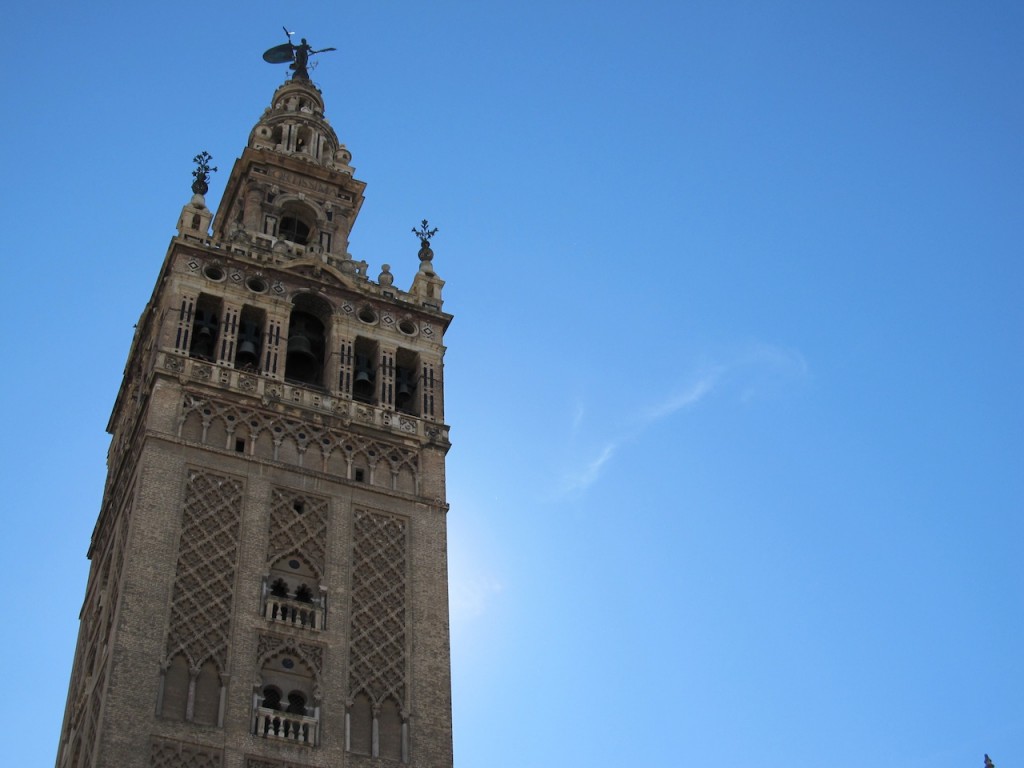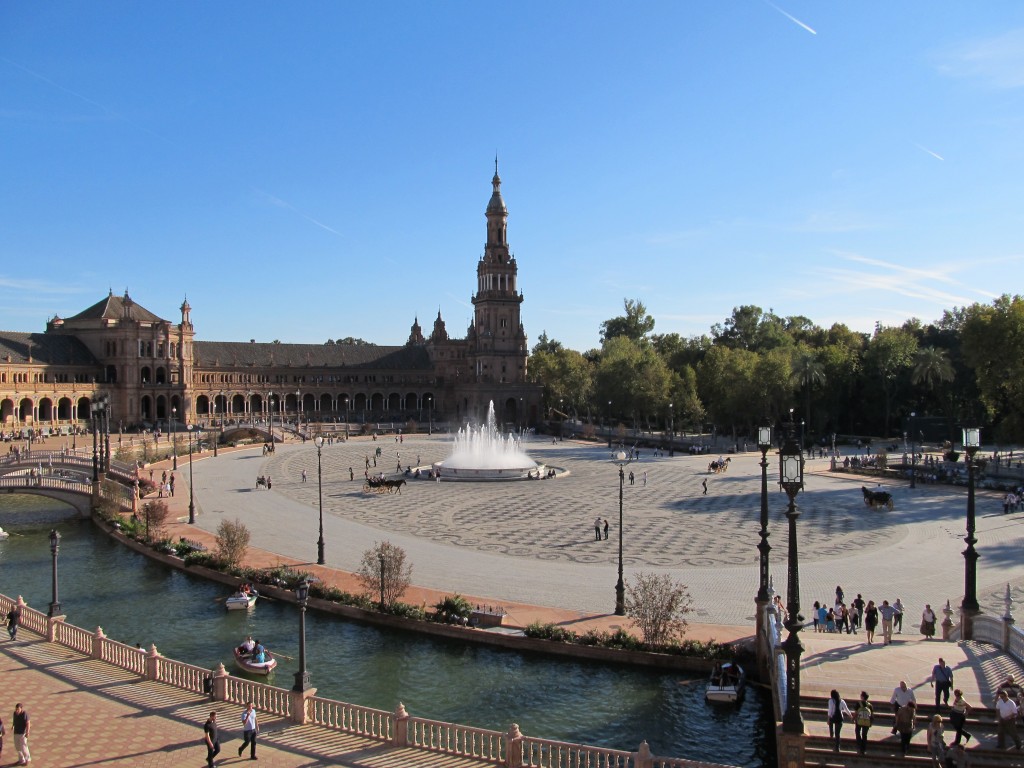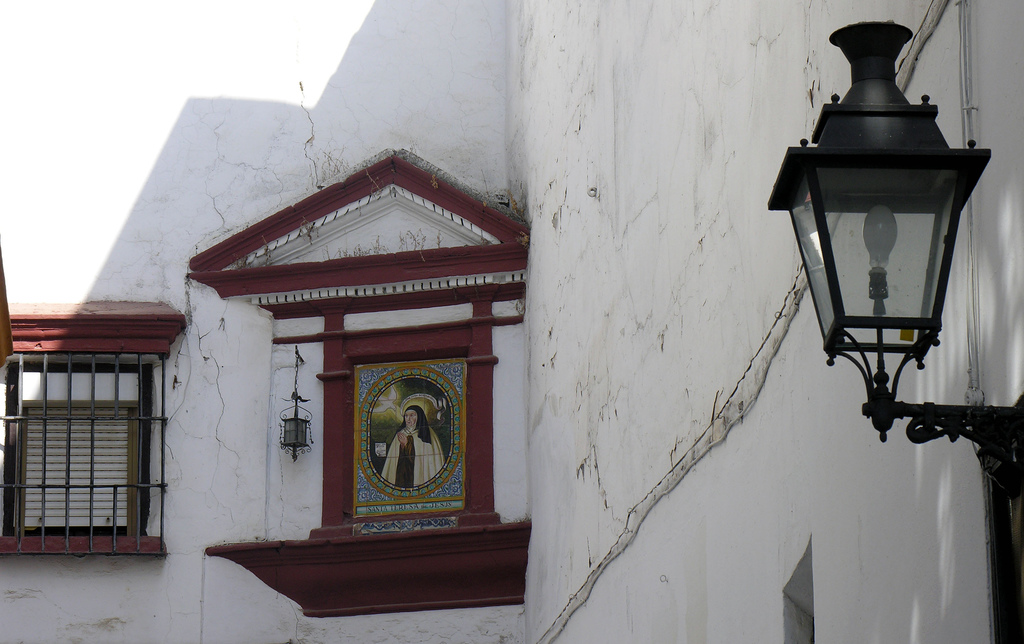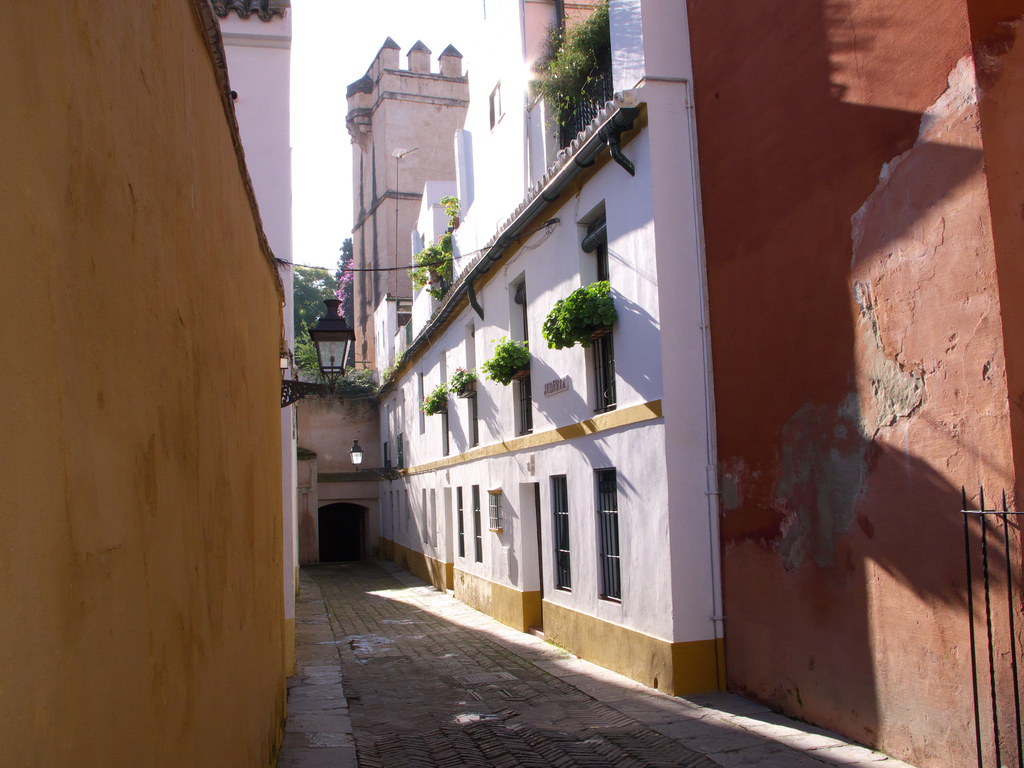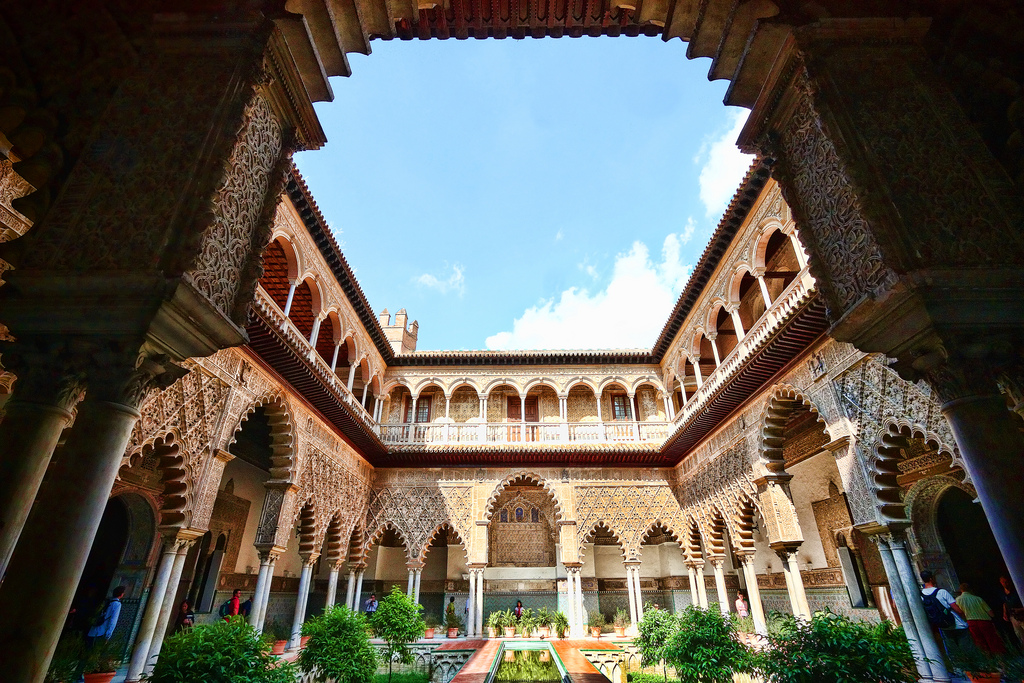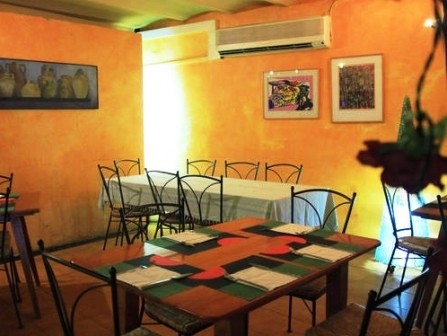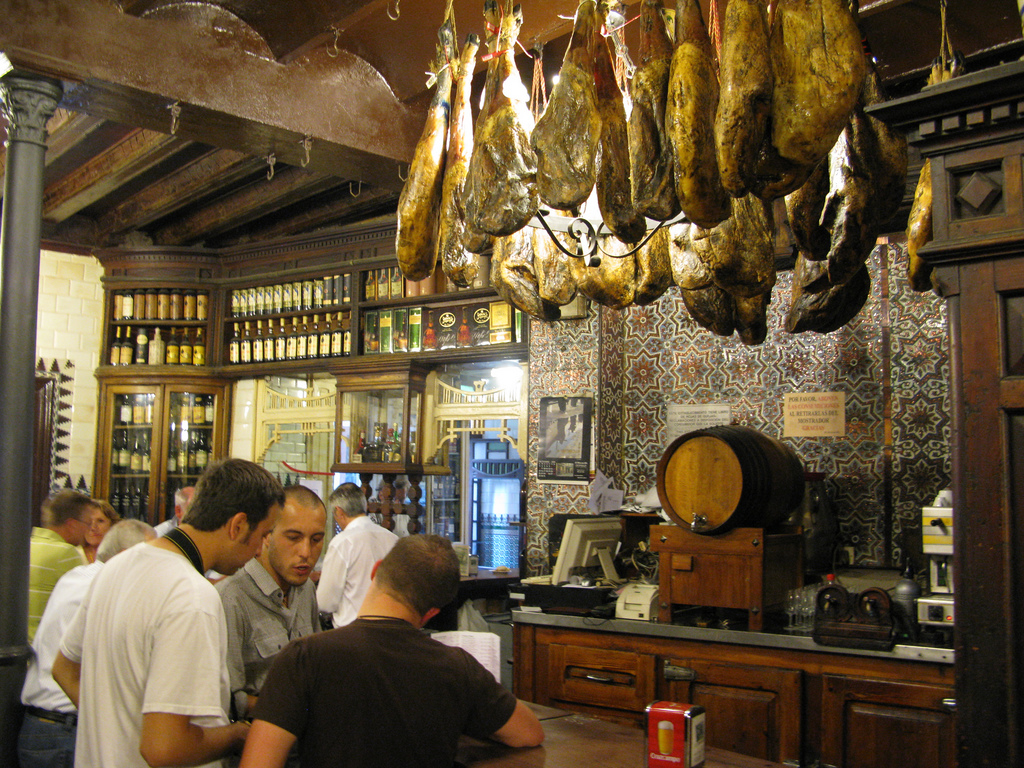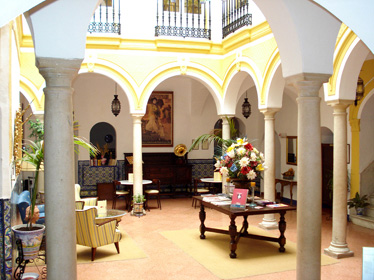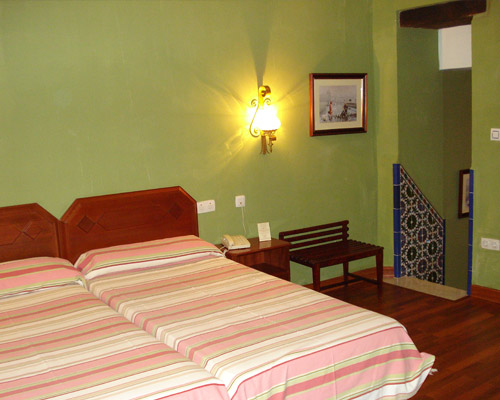This time around our guest post is from Will Peach of Gap Daemon. He’s been kicking around Spain for a few months now and wrote this fantastic guide on the Andalusian city of Seville for us – JM
Having moved out to Extremadura, Spain, in September of last year I kept hearing an awful lot from locals about the mysterious state of Andalusia and its capital Seville to the south. It was only a chance weekend road trip however, and an opportunity to roam the heart of the city itself, that I became fully acquainted.
Navigating Seville’s winding cobbled streets and happening upon glorious building after glorious building, I suddenly understood what all the fuss was about. Here was a city that not only dazzled in the stifling Spanish heat but also reveled in the grand splendour of two bygone ages: the Moorish Era and the Golden Age.
Needless to say, fuelled by the wine and cerveza of its buzzing terraces, it didn’t take me more than 48 hours to fall in love with Seville or the friendly sevillanos that call the city home. I doubt it’ll take you much longer either.
Things to See and Do
Plaza de España
In a city of 700,000 people (Spain’s third largest) there’s no shortage of things to do. A great place to start however (and a good spot to get your bearings) is at the centre of the Plaza de España, made famous from the 1929 World’s Fair as the home of the Spanish pavilion.
It’s free to enter and walk around the ring of mosaics, each one dedicated to a separate province in Spain, and Star Wars geeks might also be interested to know that the central bridge here was used in Episode II: Attack of the Clones. Be sure to have a wander in the adjacent Maria Luisa Park too and take shelter under some of its huge palms.
Cathedral of Seville
The history behind Seville’s magnificent Cathedral, otherwise known as the Cathedral of Saint Mary of the See, is pretty lengthy and complicated. A visit here, on the other hand, needn’t be either.
When it was finished in the 16th century the Cathedral of Seville upstaged the Hagia Sophia as the largest in the world. None of that scale is lost today. Walk around the building, the whole 11,520 square metres of it, and marvel at its size. Home to no less than 80 chapels as well as Spain’s longest nave, the €8 fee to get in here is decent value. Watch out too for the remains of Christopher Columbus, the conquistador part responsible for such opulence.
Barrio Santa Cruz
Seville’s Jewish quarter, Barrio Santa Cruz, is best visited after a trip to the Cathedral (given its close proximity) and best discovered on foot. Famed as the most picturesque and elegant of Seville’s neighbourhoods, it’s easy to get lost in the narrow alleyways here for hours on end only to surface out onto beautiful tree-laden squares like Santa Cruz and Dona Elvira.
Among the stores here selling tourist stuff centred on Flamenco and bull fighting you can find some neat little artisan shops too.
Real Alcáza de Seville
Originally a fort built by the Moors to protect their city of “Sbiliyaâ€, the Alcáza later morphed into a fantastic palace beset with ponds, courtyards, patios and baths.
Shell out the €8.50 to get inside and you can even set foot in the room where Columbus’ voyage to Asia, erm, America, was planned.
Food and Drink
Tapas reigns supreme in this part of Spain and unluckily for this vegetarian as does meat. Aside from the more typical Spanish tapas you’ll find anywhere in the country – like patatas bravas (potatoes in a spicy sauce) and tortilla (Spanish omelet) – the best thing to try in Seville is the jámon (ham).
La Giralda
Not the monument of the same name but rather a chic little eatery residing on Seville’s street of endless tapas joints, Mateas Gargo. Here you can try solomillo al whiskey (beef steak in whisky) with a strong glass of jerez (sherry). Not too expensive (tapas here range from €5-10), the view of La Giralda, the bell tower of the Cathedral, makes this a popular spot.
Habanita
This vegetarian restaurant (well not strictly – it still has meat options) in the centre of the city saved my bones one evening after I’d worked up quite a hunger during the day.
It might be a bit tougher to find (its closer to the University of Seville) than the centrally located La Giralda, but it’s worth it for mains like the spinach lasagne, platefuls of fried yucca and some rather refreshing Sangria. Head on Saturday night as it closes on Sundays.
Bar Alfalfa
Thanks to its buzzing atmosphere (locals and tourists alike), Bar Alfafa has not only become one of my favourite nightspots in Seville, but possibly the whole of Spain.
From the outside it looks like it might be a squeeze but step inside however and it’s even tighter than it first appears. This is partly why it looks brilliant at night when the locals spill out on to the street. It also has amazing (and cheap) pan con tomate (bruschetta).
El Rinconcillo
After receiving a lot of attention from having featured on the Food Network in the US I was a little hesitant about trying El Rinconcillo. Arriving here however and stepping foot inside the quaint old building its home to, I was quickly swept away with the atmosphere and chatter going on around me.
It might have been impossible to find a seat, but I didn’t really care when I had a glass of wine in my hand and watched as the bartenders chalked up my order on the board above the bar. If you dream of drinking in a “traditional Spanish bar†this is it.
How to get there
Just a two-hour car journey south for myself, Seville is easily accessible for other farther flung visitors with Sevilla International Airport (which handles several flights a day from the UK and Europe) a short 25-minute ride out from the centre of the city.
If you’re heading here from other parts of Spain it’s worth looking into Spain’s Renfe train network and Avanza bus routes as there is frequent service between all main Spanish cities and Seville.
There are plenty of budget flights available from the UK (with return tickets under £100) while train and bus tickets within Spain (depending on the point of departure) generally cost around €20-30 one-way.
A bit of orientation
Here’s a handy map laying out all the sights mentioned above to give you an idea of where things are in Seville. Click on the markers to see the sight listed and zoom and pan around to see more of the map.
View 48 hours in Seville in a larger map
Get around in Seville
Despite its large size, everything worth seeing in Seville is condensed into the centre of the city with most attractions in easy walking distance of each other. A word of warning though: head in the Sevillian summer and walking far will be the last thing on your mind.
Thankfully the city’s bus and metro system is cheap and easy to ride and tickets can be purchased at kiosks and stations all around Seville. Just recently the tram system has expanded to more sites in the city too.
Where to stay
Seville has plenty of cool hostels to stay for a couple of nights with most centrally located and easily accessible from the airport, bus and train stations.
The Garden Backpacker
A friend recommended Garden Backpacker to me but browse the net and you’ll find plenty of other rave reviews about this place. Located in Santa Cruz, this hostel is in the heart of the action and features really cheap dorm stays (€8-10 a night – privates around €20) as well as a free daily walking tour. An excellent chill out hostel with a very relaxed and friendly vibe – oh and make sure you try the free sangria!
Hotel Abanico
A traditional Andalusian hotel, Hotel Abanico is a comfortable and decently priced place to stay very close to the Cathedral, the Alcáza and Santa Cruz.
There are no dorm options here but a shared four room private costs around €17 per person per night with a private single ensuite ranging from €40-50. Features a free coffee shop and wifi making it a great low-key option if you’re looking to escape the hostel vibe.
Budget
Fortunately Seville is a bit cheaper than Madrid and Barcelona, with most landmarks cheaper to enter. You can save money here by visiting in the cooler months and walking, rather than riding on public transport, around the city.
The biggest expense in Seville is most likely to be food and drink (yet restaurants and bars here are still a fraction cheaper than Spain’s bigger cities). You can save yourself some pennies by filling up on hostel or hotel breakfasts (many of these are included in the room cost) and buying lunch at supermarkets like Dia or M.A.S.
Conclusion
It’s hard not to visit Seville and not want to come back. The city’s fantastic architecture, buzzing bar scene and baking sun make this, in my opinion, an incredibly underrated world city that few people take the time to discover.
I loved it so much here – and felt my 48 hours so short – that I’ve decided to relocate to Andalusia myself so that I can visit the city a lot more often!
